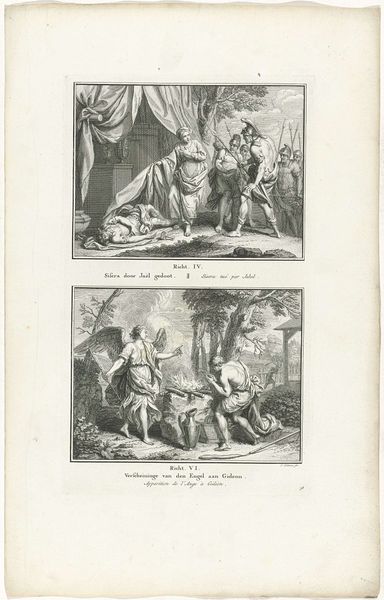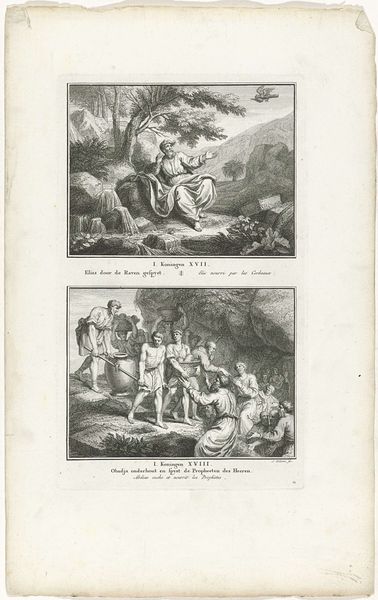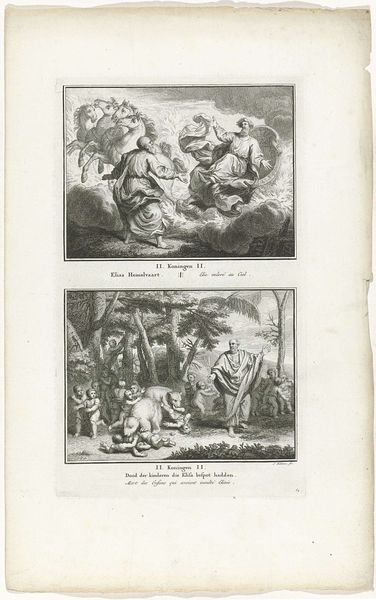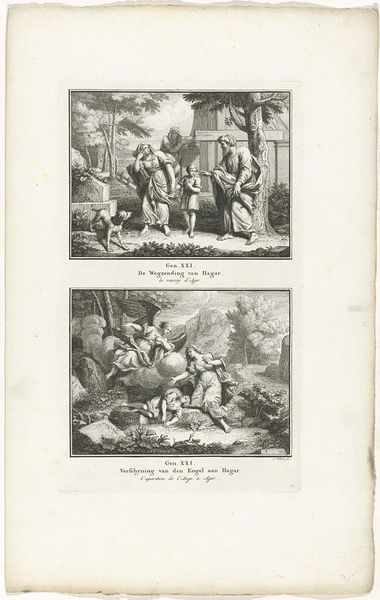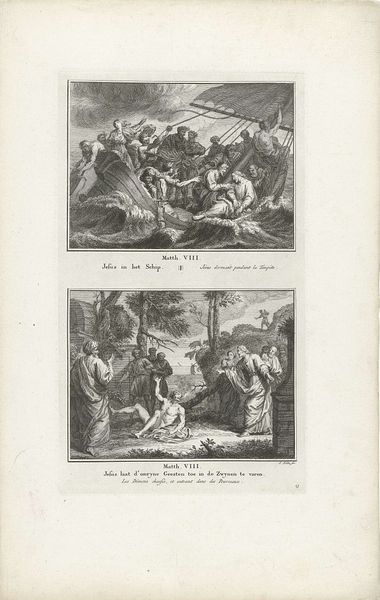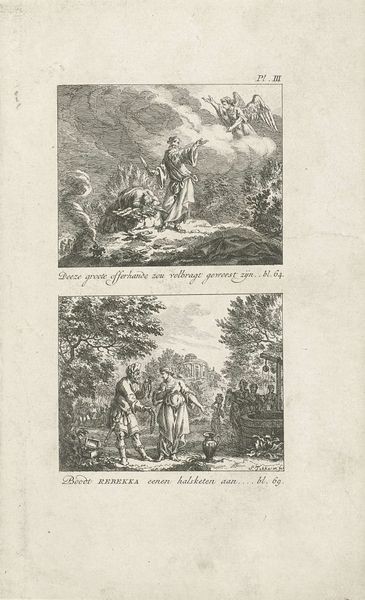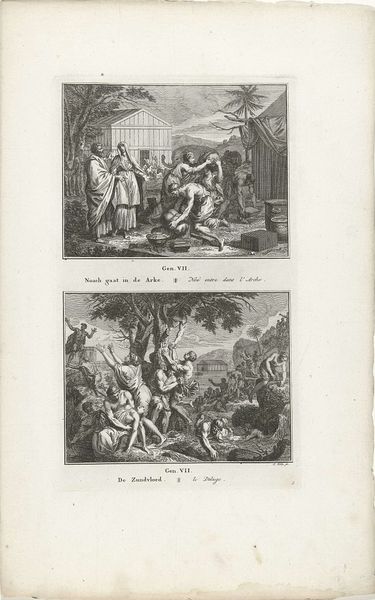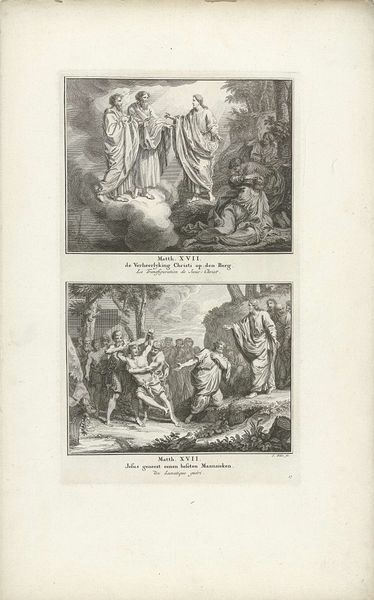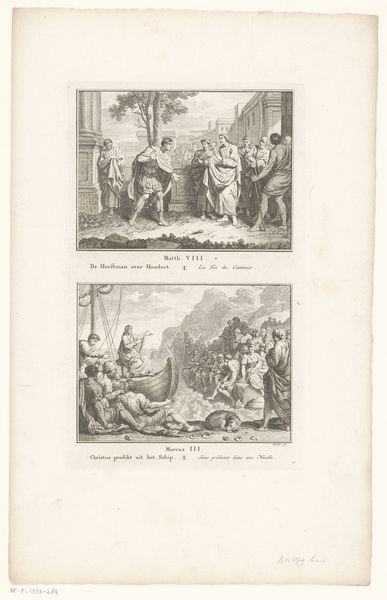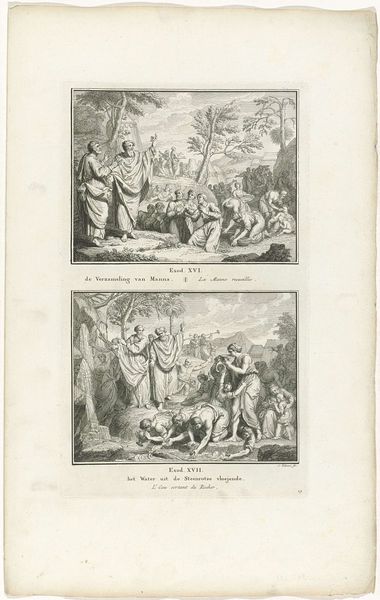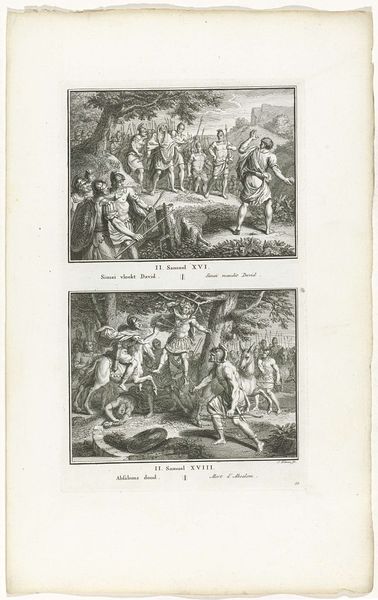
Dimensions: height 318 mm, width 186 mm
Copyright: Rijks Museum: Open Domain
Curator: Here we have a print titled "Wonder der broden en Christus loopt over het water," or "Miracle of the Loaves and Christ Walking on Water," created in 1791 by Simon Fokke. It’s currently housed here at the Rijksmuseum. Editor: It immediately strikes me as stark—the stark contrast between the etched lines and the paper, creating these dramatic scenes. The very *making* of this piece, the meticulous labour of carving into a plate… it speaks of dedication and control, mirroring, perhaps, the stories depicted. Curator: Absolutely. The starkness underscores the powerful themes. Fokke is depicting two miracles from the Gospel of Matthew: the feeding of the five thousand and Christ walking on the water, saving Peter from drowning. Both are deeply symbolic of divine intervention and the power of faith in overcoming earthly limitations. Editor: I’m curious about the printmaking process here. Think of the societal context – prints allowed for mass distribution. The choice of printmaking transforms religious narrative from rare illuminated manuscripts seen only by the wealthy, into something much more accessible. The means of production shapes consumption. Curator: That accessibility is key to its symbolic function. Religious imagery wasn’t just about aesthetics; it was about transmitting knowledge, reinforcing belief. Notice the detailed iconography in both scenes: Christ's outstretched hand, the abundance of bread—they are potent visual shorthand, instantly recognizable to a wide audience, reinforcing specific theologies and moral values. Editor: Right, the *function* becomes intrinsically tied to the *form.* This wasn't meant to be purely decorative; it was about propagation. It’s easy to overlook, in our digital age, the sheer power an easily reproduced image held in disseminating ideas, influencing thought on a massive scale. Curator: And that’s the beauty of engaging with art from the past – it provides us with insight into not just what people believed, but *how* they structured their understanding of the world. It becomes a fascinating point of entry to understand cultural and religious sensibilities. Editor: Exactly. Analyzing art, especially prints like these, as social and material artifacts offers invaluable insight into how beliefs were made tangible, and how their very dissemination helped shape collective consciousness. Curator: A fruitful encounter indeed. I'm drawn to how this piece exemplifies cultural memory sustained through visual symbols. Editor: I concur, observing the materials and their mode of distribution gives such rich insights into social contexts.
Comments
No comments
Be the first to comment and join the conversation on the ultimate creative platform.
